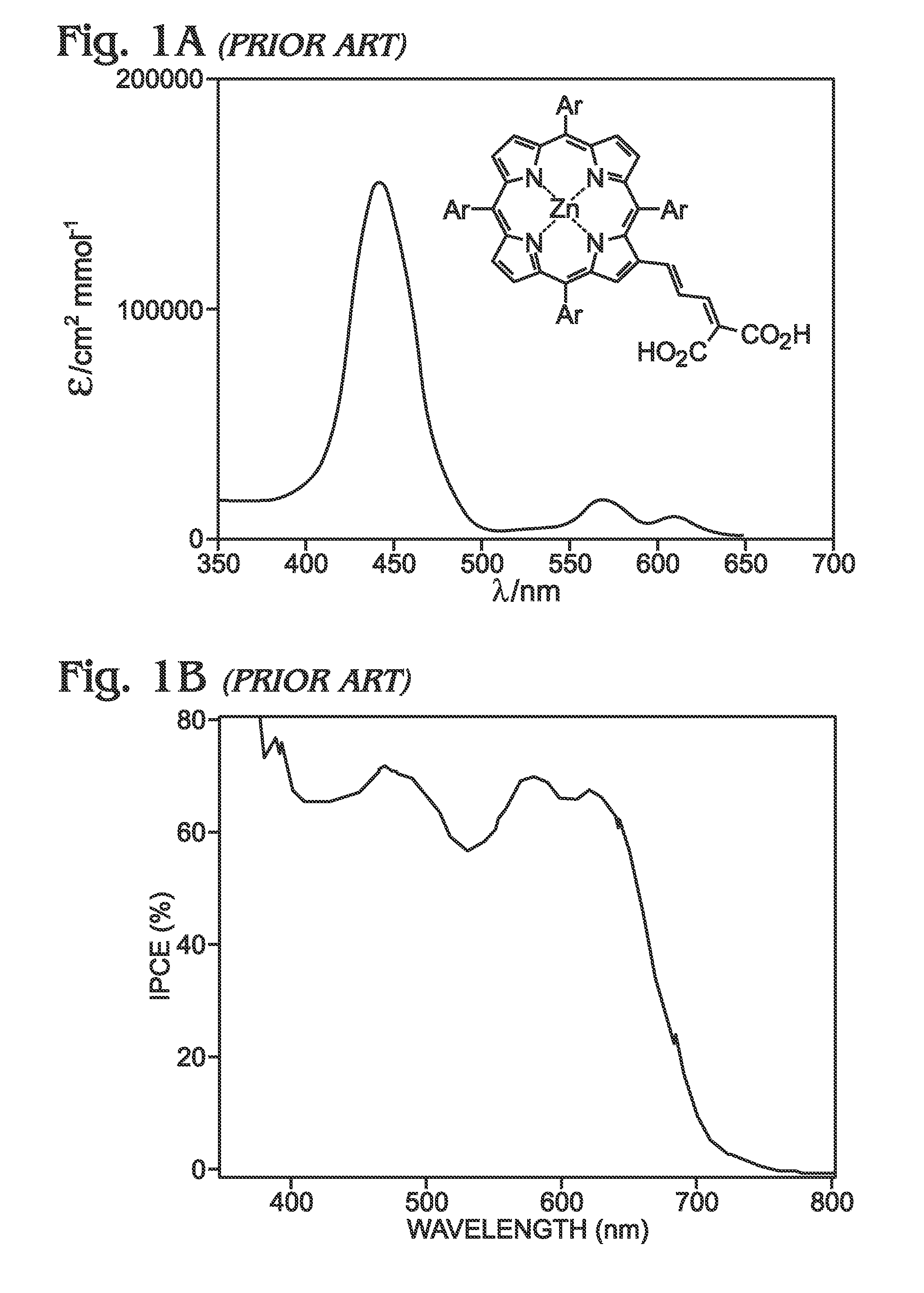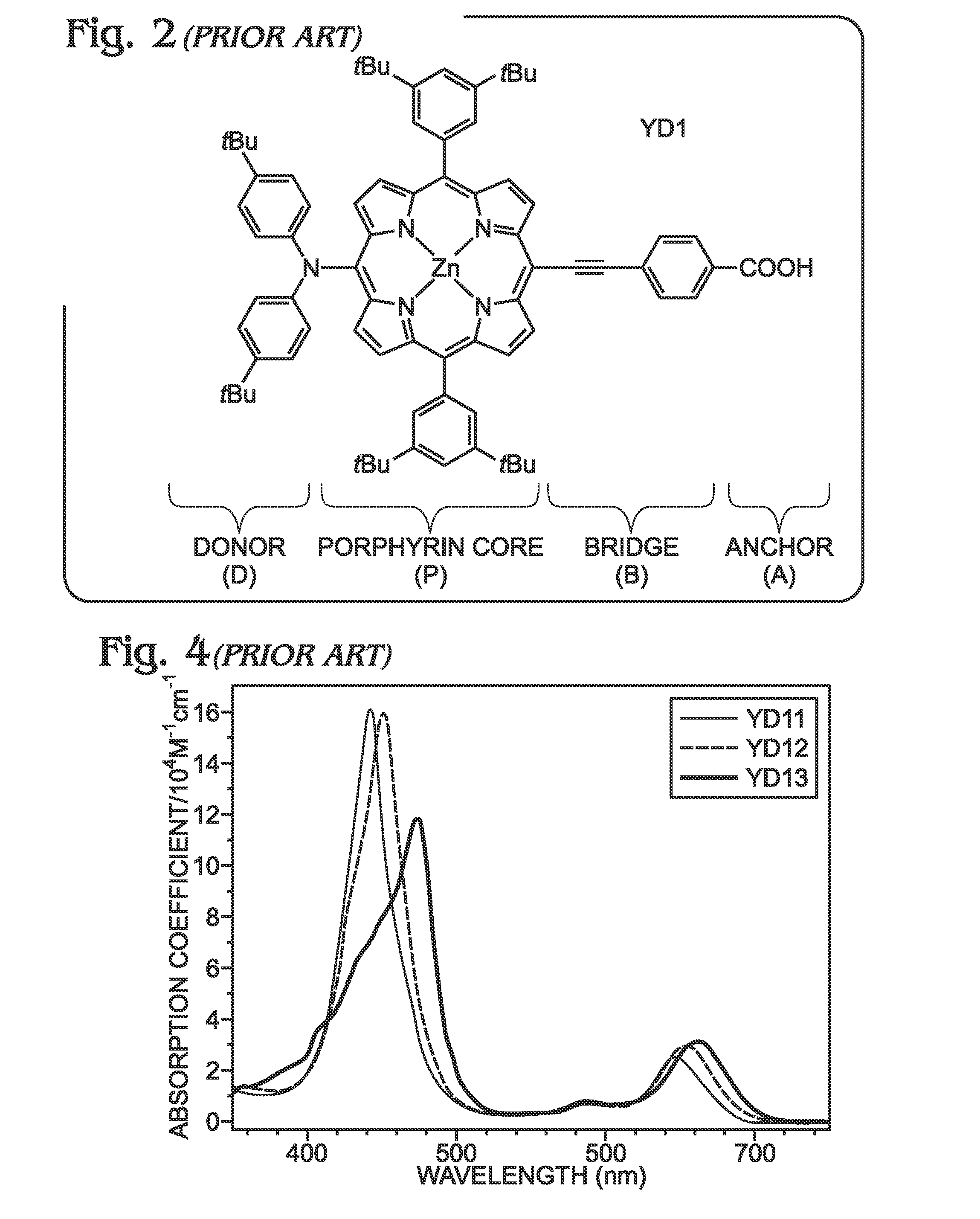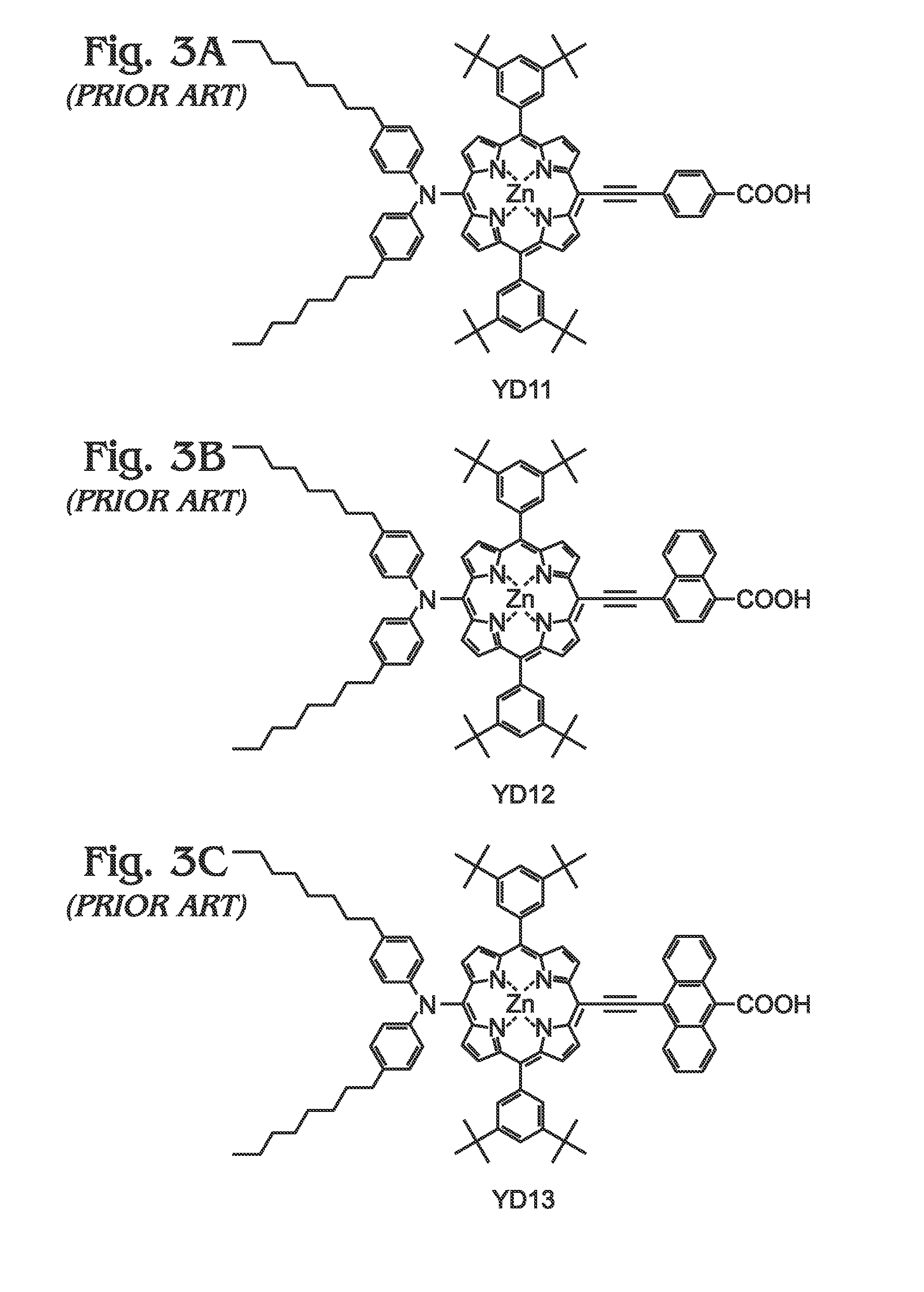Long Wavelength Absorbing Porphyrin Photosensitizers for Dye-Sensitized Solar Cells
- Summary
- Abstract
- Description
- Claims
- Application Information
AI Technical Summary
Benefits of technology
Problems solved by technology
Method used
Image
Examples
Embodiment Construction
[0037]FIG. 7 is a diagram depicting a long wavelength absorbing porphyrin / metalloporphyrin molecule. The porphyrin / metalloporphyrin molecule 700 comprises a porphyrin macrocycle 702, and an anchor group 704 for attachment to a substrate. In one aspect, the porphyrin macrocycle 702 includes an “M” moiety such as H2 or a metal. A molecular linking element 706 is interposed between the porphyrin macrocycle 702 and the anchor group 704. The porphyrin / metalloporphyrin molecule 700 also comprises an (aminophenyl)amine group 708 that may be either N,N-(4-aminophenyl)amine 708a or N-phenyl-N-(4-aminophenyl)amine 708b, the amino moiety of the 4-aminophenyl group is derivatized by an element such as hydrogen, alkanes, haloalkanes, aromatic hydrocarbons, halogenated aromatic hydrocarbons, heteroarenes, halogenated heteroarenes, or combinations of the above-mentioned elements. As used herein, the terra “element” is not defined as only an element of the periodic table, but may also refer to a mo...
PUM
| Property | Measurement | Unit |
|---|---|---|
| Wavelength | aaaaa | aaaaa |
Abstract
Description
Claims
Application Information
 Login to View More
Login to View More - R&D
- Intellectual Property
- Life Sciences
- Materials
- Tech Scout
- Unparalleled Data Quality
- Higher Quality Content
- 60% Fewer Hallucinations
Browse by: Latest US Patents, China's latest patents, Technical Efficacy Thesaurus, Application Domain, Technology Topic, Popular Technical Reports.
© 2025 PatSnap. All rights reserved.Legal|Privacy policy|Modern Slavery Act Transparency Statement|Sitemap|About US| Contact US: help@patsnap.com



